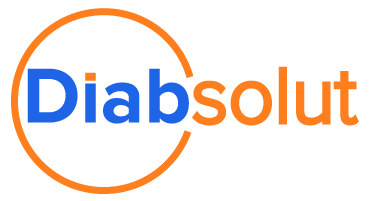How to Adapt to the New Challenges in Higher Education, Part 2
Author: Nick Van Haeften 
In the first blog in this series, I discussed how the widespread adoption of modern technology to resolve problems and achieve objectives has brought about a change in the expectations of students, faculty, staff, alumni, and donors — resulting in its own unique set of challenges.
In this blog I will continue to review those challenges, offering solution tips for how higher education institutions can adapt to address these concerns.
New Challenges in Higher Education
Again, as mentioned in our last blog, remember that each solution tip can address different aspects of several challenges and that smart solution investment can lead to a better ROI for your organization.
-
AI and Generative AI Policies:
For all its good and bad points, generative AI is changing the landscape of higher education. AI and AI content generation will necessitate the continuous evolution of policy and solutions for higher education.
Solution: This is really two separate issues to tackle. Generative AI and maximizing the use of AI in a responsible manner can put your organization ahead in terms of communication and efficiency.
- Think workflow and process improvements, further automation of tasks, and new ways to personalize communication
The other aspect of this is student use of generative AI, which is having both a positive and negative impact, and leaving a lot of higher education stakeholders divided.
- Regardless of your institution’s stance on the use of generative AI, the ability to access and quickly update policy is incredibly important
- Giving faculty and administrators the ability to collaborate and share tips when addressing this and other issues is also helpful
-
Oversight and Visibility:
Agility has become increasingly important for higher education organizations to remain relevant.
Solution: Making data-driven decisions based on data visibility, process oversight, and analytics is the best way for any organization to adapt quickly, while minimizing risk.
- Moving from disparate systems to a single platform solution model is a critical investment, as it provides better data and process visibility
- You’re less likely to make lasting and impactful improvements if you don’t have all the information you need
- Look into getting a CRM with analytic capabilities geared towards easy system integration
- The easier it is to get a detailed breakdown and analysis of relevant data, the easier and faster it will be to understand, plan, and act based on concrete information
-
Finance and Resiliency:
With tighter budgets and higher financial strain, connecting front and back-end accounting and financial processes and information has become critical to ensuring organizational resiliency.
Solution: Again, automation and having the right tools goes a long way towards saving time and having audit-friendly processes.
- Integrating payment and donation options for students, alumni, and donors offers convenience, can help with payment collection, and can eliminate the need for manual entry of that information
- Eliminate spreadsheets and manual processes wherever possible — the more processes and data that are integrated with your solution the easier it will be to pinpoint how and why specific processes are impacting your organization’s financial health
-
Offering a Unified Stakeholder Experience:
The recruit that attends an event or donor that contributes to a fundraising campaign wants a personalized experience from their first interaction onward. From remembering their name and interests, to targeted follow-ups and advice or guidance for next steps.
Solution: Again, we have an entire blog dedicated to personalizing student interactions, but automation and centralization of data are vital if you want to offer a unified experience that ticks all the boxes for a variety of stakeholders.
- Data is crucial here, and the more you can collect and use appropriately the better your stakeholders’ experience will be
- Connect systems to efficiently centralize all data points and effectively use that data
- Omni-channel solution integration and mobility can help increase data collection for personalization and analysis, while allowing stakeholders to communicate in the ways they prefer
- Adding marketing tools to your solution is a great way to personalize interactions without increasing resource demand
- Setting up your solution to assist users with getting relevant information and completing tasks as easily as possible helps them focus on providing a better stakeholder experience
Next Steps
If you can identify with any of the challenges listed in this blog series and think there may be gaps in your current solution, get advice on how to address those gaps in the best way possible for your organization.
The right integration partner will help you tackle multiple challenges, thoroughly assess your budget and objectives, and maximize your solution’s value.
We have experience working with higher education organizations of all sizes to find solutions that fit their specific needs and budget — so if you’re unsure what the right solution is for your organization or want advice on how to address your own organization’s challenges — contact us.
Additional resources:
- Learn about Salesforce Education Cloud
- Find out more about Diabsolut’s end-to-end higher education solutions
- Read the success stories of some of our higher education clients
Search
Trending Topics
- E18: Click FSE Migration to Salesforce Field Service – Java With Sugar Podcast
- E17: The Process of Migrating from a Product That Is Retiring – Java With Sugar Podcast
- E16: Decoding FSE’s End-of-Life and Common Migration Practices – Java With Sugar Podcast
- A Dual Approach to Efficiency in Field Service Management: Asset-Centric vs. Customer-Centric Models
- E15: Trends and Limitations in AI – Java With Sugar Podcast
- Enhancing Field Service Operations with SFS-X
- E14: Our Point of View and Insights on AI – Java With Sugar Podcast
- E13: What Is Artificial Intelligence and Why Is It Beneficial for You? – Java With Sugar Podcast
- AI Ethics: What Is It and Why Does It Matter?
- 3 Tips to Improve Your Strategy and ROI When Selecting SaaS Solutions
